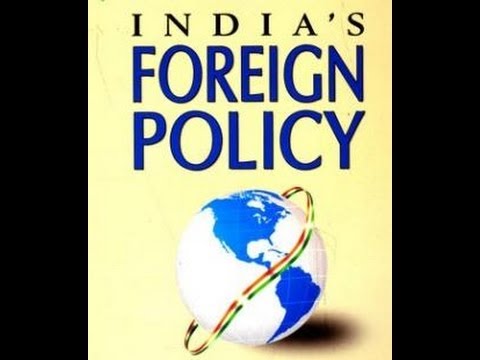India’s Foreign Policy
National Interest Consists Of 2 Aspects:
- The first one being national security, territorial integrity, development issues, economic development, etc.
- It also includes the global issues like peace, human rights, terrorism, disarmament, etc.
The Definition of Foreign Policy
- Foreign Policy is the sum of the principles, interests, and objectives of a nation in building its relationship with the rest of the world.
The Determinants of Foreign Policy:
- Geographical position
- Economic compulsions
- Historical experiences
- Cultural foundations
- Political traditions
- Constitutional system
- National character, and
- The charisma of the leadership or the leader
Now, these are primarily the determinants of the foreign policy of any nation.
What Are the Roots of India’s Foreign Policy?
- It can be stated that our freedom movement started getting inclined to the Gandhian principles and Nehru’s personality.
- It is also the people’s desire to live in peace and alliance with our neighbours. This desire was expressed through the Haripura Session of the Indian National Congress hailed in 1938.
- Nehru, who was not only the Prime Minister of India, but also the Foreign Minister, is considered as the chief architect of the free India’s foreign policy.
The Six Features Of India’s Foreign Policy:
- Non-alignment
- Remaining aloof of power politics
- Staying against any power bloc
- Nehru along with Nasser of Egypt, Tito of Yugoslavia, and Sukarno of Indonesia were the pioneers in establishing the Non-alignment Movement or the NAM.
- Opposition to racialism, imperialism, and colonialism
- India enthusiastically opposed racialism, exploitation of any form, domination, and discrimination.
- It has always been sympathetic towards nations struggling for independence.
- Panchsheel
- It is derived from 2 Sanskrit words Panch meaning five and Sheel that means rule of conduct.
- It was signed with China on the Tibetan issue on the 29th May 1954.
- What is meant by Panchsheel? It depicts:
- Mutual respect for each-others’ territorial sovereignty and integrity.
- Non-intervention in each-others’ internal affairs
- Non-aggression
- Peaceful co-existence
- Mutual benefit and equality
- What is meant by Panchsheel? It depicts:
- Peace and International Understanding.
- India has always stood for peace through the United Nations Organization or the UNO.
- It wants peaceful settlement of international disputes.
- These two interests are shown by India being signatory to all international Human Rights documents.
- India is the largest contributor to the United Nation’s peacekeeping missions all over the world.
- Disarmament.
- India strongly believes that no lasting peace can be thought of without disarmament.
- India vouches for total nuclear disarmament, and it presented the “Action Plan for Nuclear Weapon Free and Non-violent World order in the 3rd Session of the United Nation’s General Assembly on Disarmament, in the year 1988.
- India vehemently opposes the Nuclear non-proliferation Treaty or the NPT and the Comprehensive Nuclear Test Ban Treaty or the CTBT. It claims these to be discriminatory.
- Mutual co-operation.
- India believes in mutual co-operation among the South Asian nations through regional bodies, like the ASEAN, SAARC etc.
- The SAARC, or the South Asian Association for Regional Cooperation, has played a prominent role ever since its formation in the year 1965. It was an idea considered by the Bangladeshi President Zia Ur Rehman. It vouches for the promotion of welfare, acceleration of socio-economic development, fosters elective self-reliance, and strengthens co-operation.


Leave a Reply